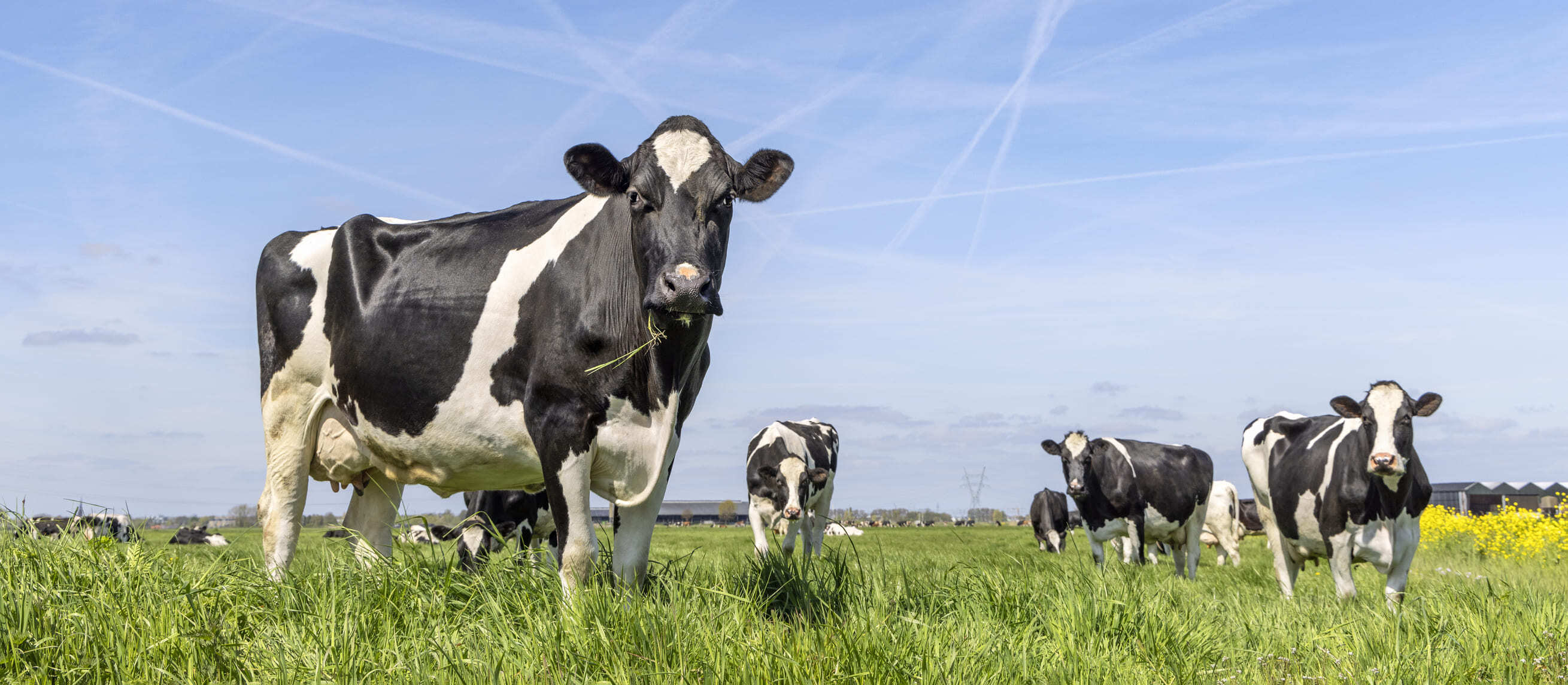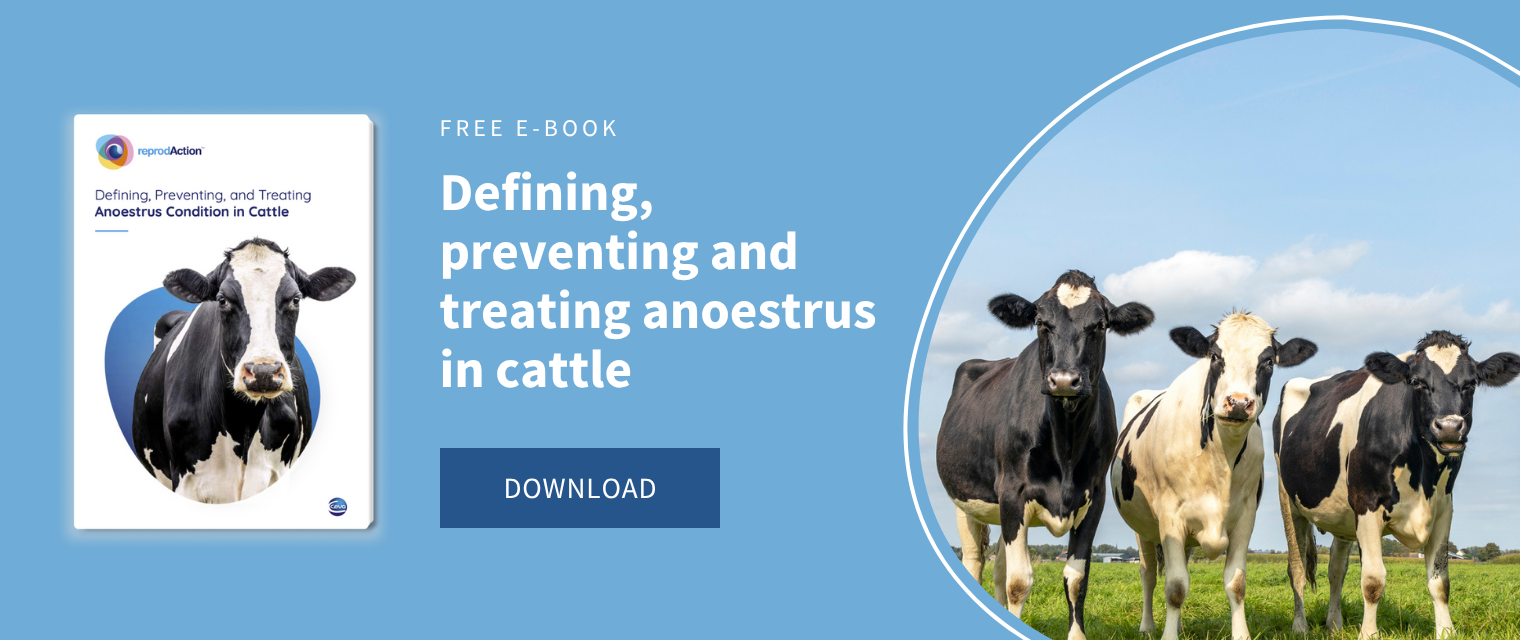Pregnancy loss in dairy cows is a significant concern for the industry, impacting both reproduction efficiency and economic performance. Several studies have provided comprehensive insights into the mechanisms and periods of pregnancy loss, emphasizing the roles of progesterone (P4), pregnancy-associated glycoproteins (PAG), and corpus luteum (CL) function. Here I attempted of making a summary of the findings from these studies which offered an understanding of pregnancy loss during the first trimester of gestation in dairy cows.
Prefer to listen to this article? Click the play button below and enjoy our podcast!
Fertilization failure and early embryonic death
In the first week post-breeding, we are assisting at two phenomena, either fertilization failure and also a substantial proportion of the fertilized oocytes can undergo into a cessation of development, causing what is called early embryonic death. Factors impacting these phenomena are, heat stress which reduces the fertilization capacities of the oocytes, normally is very high (between 90%-95% of heifers and 80%-85% of lactating cows), reducing it to below 40% in het stressed dairy cows. Poor oocyte quality, can also be impacted by inadequate P4 levels during preovulatory follicle development, this is a typical factor impacting high yealding dairy cows, of which the fast liver metabolism is causing a sudden clearance of the CL produced P4 from the animals body, having a negative impact on the LH pulastility and causing the premature reactivation of the oocyte meiosis causing the ovulation of poor quality egg.
Embryonic death or luteal regression
One main question which has been causing significant interest in the scientific community is pregnancy loss initiated by embryonic death or luteal regression? Recently the group of Milo Wiltbank in Wisconsin have measured daily concentrations of P4 between day 7 and day 33 and PAGs between day 17 and day 33, and both hormones between day 47 and 66 post AI in dairy cows undergoing pregnancy loss (Domingues et al., 2023). They provided the following key findings:
- Elevated P4 did not hasten embryonic attachment but increased PAGs during the second month of pregnancy.
- Approximately 50% of pregnancy losses between days 20 and 33 were due to luteal regression, characterized by a decrease in P4 while PAG remained constant. The other 50% were due to embryonic death, indicated by a decrease in PAG while P4 remained constant.
- This highlights the importance of both luteal function and embryonic health in maintaining pregnancy. It suggests that interventions aimed at supporting luteal function and monitoring embryonic health could be crucial in reducing pregnancy loss.
Corpus Luteum: maintenance or regression
The maintenance or regression of the CL during multiple decisive periods of pregnancy, is one of the topic which has caused significant interest in the scientific community. There are 4 main periods that should be taken into account where maintenance and regression of the CL can be crucial for embryo/foetus survival:
- Around Day 7: Early CL regression can occur due to premature secretion of prostaglandin F2α (PGF) from the uterus, often seen in animals ovulating after a period of low circulating P4.
- Days 18-25: Normal luteolysis occurs in non-pregnant cows, while in pregnant cows, interferon-tau (IFNT) secreted by the elongating embryo prevents luteolysis by altering uterine gene expression and reducing PGF pulses.
- Second month of pregnancy: Undefined mechanisms maintain the CL during this period, preventing luteolysis despite the presence of uterine PGF secretion.
- Just before parturition: Cortisol from the fetus initiates luteolysis, leading to a cascade of events that result in parturition.
Apparently of major importance is the role of local uterine signals to and from the embryo in preventing luteolysis.

Key periods of pregnancy loss during the first trimester
The developing embryo and fetus are the key factors in the success of pregnancy to its term, and within the first trimester there are 3 pivotal periods when pregnancy loss can occur:
- Days 8-27: This period encompasses embryo elongation and maternal recognition of pregnancy as well as the formation of the placenta, the physical attachment between the previously free-floating elongated embryo and the maternal endometrium. Losses during this period are often due to inadequate trophoblastic elongation and suboptimal uterine histotroph productions, in the first 19 days the embryo passes two very important phases, it exits from the zona pellucida, at the expanded blastocyst stage and it initiates an impressive elongation process which brings it to a dimensions around 15 and 20 cm in length in a matter of just 10 days, starting from a 200 micron diameter of the pre-hatching blastocyst. IFNT plays a crucial role in maintaining the CL and supporting embryonic development.
- Second month of pregnancy: Pregnancy loss during this period is often due to defects in placental development and embryonic growth, in this phase the embryo evolves into a fetus, this pivotal period is characterized by the termination of the organogenesis, and the subsequent growth of the various apparatuses. The transition from histotrophic to chorioallantoic nutrition is critical, and any deficiencies in placental function can lead to pregnancy loss, most of these losses are diagnosed between two pregnancy diagnosis performed “early” between 28 and 35 days and around the second month, several studies have investigated the magnitude of these losses and a recent meta-analysis including 142 articles and reviews have quantified it to be around 20% in dairy cows (Albaaj et al 2023).
- In the third month of pregnancy: Pregnancy loss during this period is less common but can be elevated in cows carrying twins in the same uterine horn. Crowding and inadequate placental development are major contributors to these losses, it is defined as late fetal loss, and has a value of around 2%.
The various scientists suggest some strategies to reduce pregnancy loss, such as optimizing P4 levels, improving cow health, and managing environmental stressors. It highlights the importance of understanding the physiological changes during each pivotal period to develop targeted interventions.
Conclusion
These studies collectively provide a detailed understanding of the mechanisms and periods of pregnancy loss in dairy cows. They emphasize the roles of P4, PAG, CL function, and IFNT in maintaining pregnancy and suggest that targeted interventions during critical periods can significantly reduce pregnancy loss. By improving our understanding of these processes, the dairy industry can enhance reproductive efficiency and economic performance.
Bibliography
[1]. Albaaj, A., et al. "Meta-analysis of the incidence of pregnancy losses in dairy cows at different stages to 90 days of gestation." JDS communications 4.2 (2023): 144-148.
[2]. Crowe, Alan D., et al. "Incidence and timing of pregnancy loss following timed artificial insemination or timed embryo transfer with a fresh or frozen in vitro-produced embryo." Journal of Dairy Science 108.1 (2025): 1022-1038.
[3]. Diskin, M. G., M. H. Parr, and D. G. Morris. "Embryo death in cattle: an update." Reproduction, Fertility and Development 24.1 (2011): 244-251.
[4]. Diskin, M. G., and D. G. Morris. "Embryonic and early foetal losses in cattle and other ruminants." Reproduction in Domestic Animals 43 (2008): 260-267.
[5]. Diskin, M. G., et al. "Pregnancy losses in cattle: potential for improvement." Reproduction, Fertility and Development 28.2 (2016): 83-93
[6]. Domingues, Rafael R., et al. "Is pregnancy loss initiated by embryonic death or luteal regression? Profiles of pregnancy-associated glycoproteins during elevated progesterone and pregnancy loss." JDS communications 4.2 (2023): 149-154.
[7]. Inskeep, E. Keith, and Robert A. Dailey. "Embryonic death in cattle." Veterinary Clinics: Food Animal Practice 21.2 (2005): 437-461
[8]. Lonergan, P., et al. "Effect of embryo source and recipient progesterone environment on embryo development in cattle." Reproduction, Fertility and Development 19.7 (2007): 861-868.
[9]. Lonergan, Patrick. "Embryonic loss in cattle: who is at fault, the mother or the embryo?." (2010): 137-145.
[10]. Lonergan, P., and N. Forde. "Maternal-embryo interaction leading up to the initiation of implantation of pregnancy in cattle." animal 8.s1 (2014): 64-69.
[11]. Lonergan, Pat, Niamh Forde, and Thomas Spencer. "Role of progesterone in embryo development in cattle." Reproduction, Fertility and Development 28.2 (2016): 66-74.
[12]. Wiltbank, Milo C., et al. "Pivotal periods for pregnancy loss during the first trimester of gestation in lactating dairy cows." Theriogenology 86.1 (2016): 239-253.
[13]. Wiltbank, M. C., et al. "Maintenance or regression of the corpus luteum during multiple decisive periods of bovine pregnancy." Animal Reproduction (AR) 13.3 (2018): 217-233.
About the author
Federico Randi (Ruminants Global Technical Manager)
Federico Randi is Global Technical Manager for Ruminants at Ceva Animal Health, specializing in cattle reproduction. With a Doctor of Veterinary Medicine degree “cum laude” from the University of Bologna, he focused his career on improving efficiency and sustainability of farmed animals. Randi conducts research on ruminants fertility, using technologies like Timed AI, embryo transfer, and recombinant technologies. His extensive experience includes collaborative projects with over 20 research institutions globally. He earned his PhD at University College Dublin, concentrating on fixed-time artificial insemination and embryonic maternal communication in cattle. Currently, he serves as a Board Member in the Scientific Commission of Animal Physiology for the European Federation of Animal Science (EAAP) as an Industry Representative.




Leave your comments here